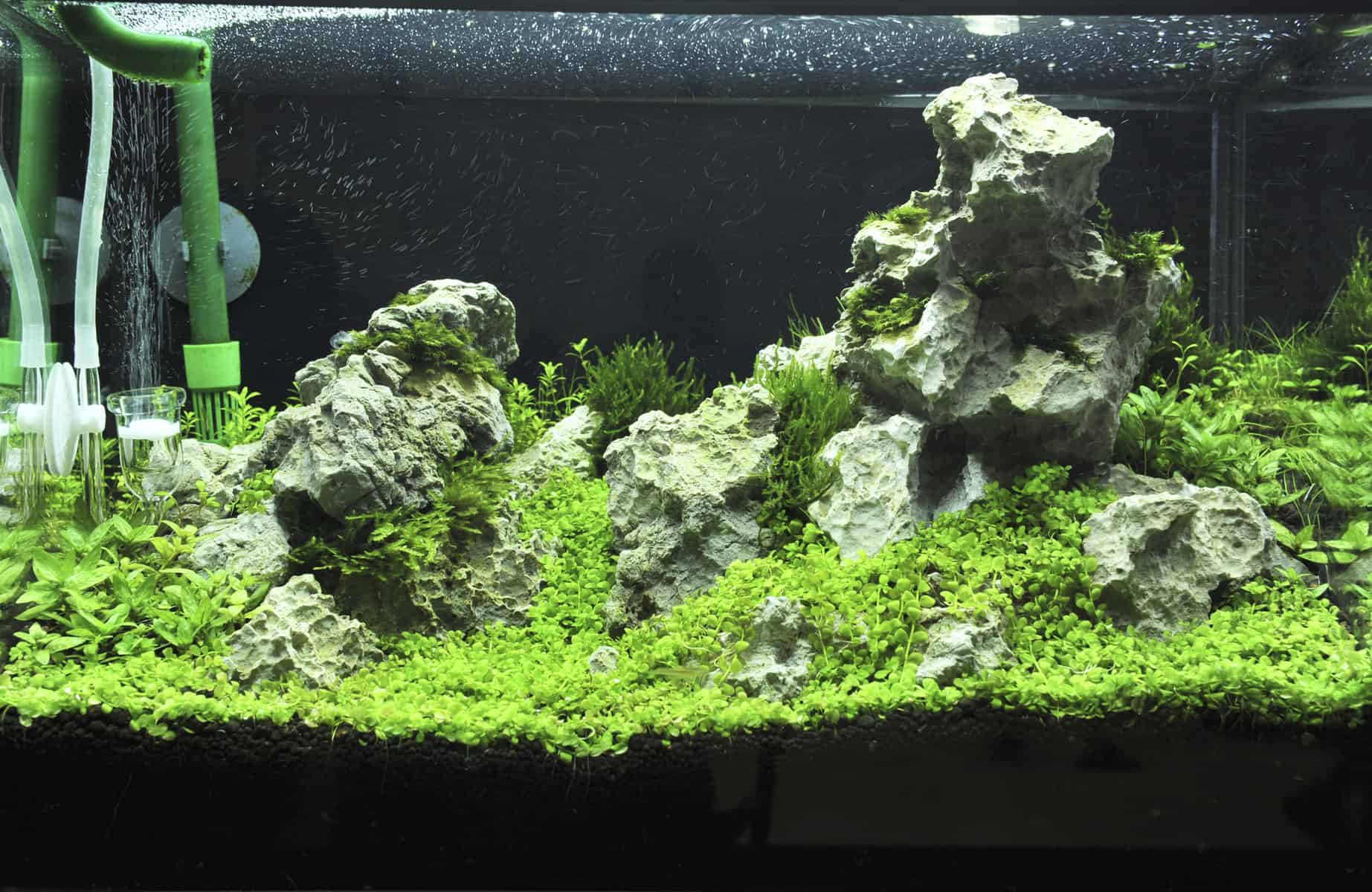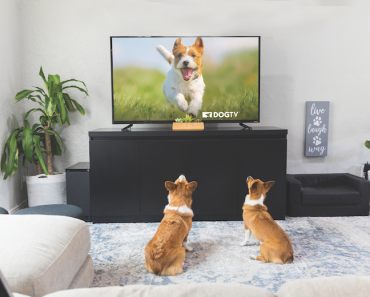If you’re a beginner and about to begin setting up your first aquarium, you’ll need to know how to cycle your tank. So, what is cycling, and why is it necessary?
Essentially, if you don’t cycle your fish tank before adding your pet fish, they will almost certainly not survive for very long, if at all! So, that’s why you need to understand the nitrogen cycle, the cycling process, and how to do it.
Read our comprehensive guide to learn how to cycle your fish tank safely and quickly.
What Is The Nitrogen Cycle?
In nature, the nitrogen cycle is an entirely natural cycle where nitrogen gas moves from the air to plants, to animals, to bacteria, and then back into the air.
However, things are slightly different in your fish tank’s enclosed environment. Here, the nitrogen cycle is more of a biochemical process.
Briefly, here’s how the nitrogen cycle works in your fish tank.
Ammonia
In the first stage of the cycle, decomposing organic matter, including fish waste products, plant leaves, and uneaten fish food, releases a chemical called ammonia. Ammonia is highly toxic to fish and other aquatic creatures and will kill everything in your tank if it’s not removed from the aquarium water.
The ammonia is processed (oxidized) by nitrogen-fixing bacteria that reside in your filter system’s biological filter media and converted to another chemical called nitrite through the oxidization process.
Nitrite
Nitrite is another chemical that’s highly toxic to your fish. Thankfully, in the next stage of the cycle, the nitrite is converted by other species of bacteria into nitrate.
Nitrate
Nitrate is still toxic to your livestock. However, this substance is far less dangerous to your fish than ammonia and nitrite.
Ideally, you want to keep the nitrate levels in your tank at 30ppm (parts per million) or less. Once the tank is cycled, that’s achieved by changing 20% to 30% of your tank water every week.
What Happens If I Don’t Cycle My Fish Tank?

If you don’t bother to cycle your fish tank before you add your new fish, the media in your filtration system won’t contain sufficient beneficial, nitrogen-fixing bacteria to turn the ammonia and nitrites into nitrates.
So, as your fish produce waste, there will be no mechanism in place to remove the ammonia from the water. Consequently, an ammonia spike will occur, usually resulting in a mass fish kill.
How Long Does Fish Tank Cycling Take?
In the aquarium environment, it takes a while for the entire cycle to become fully established. In fact, it takes from several weeks to several months for a fish tank to be fully cycled.
It’s vital that you only introduce a few small fishes at a time while the tank is still cycling so that you don’t overload your biological filter. During that time, you should test your tank water every few days to monitor the levels of ammonia, nitrites, and nitrates present in the water.
You can introduce a few small fishes as soon as the ammonia concentration and nitrite levels are zero, and the nitrates are 30ppm or less.
Fishless Cycling
There are two methods of cycling a fish tank:
- fish-in
- fishless
In this guide, we’ll discuss and explain how to cycle your aquarium using the fishless cycling method.
What You Need
Here’s what you’ll need to carry out a fishless cycle:
Set up your aquarium and fill it with dechlorinated tap water. Do not use untreated tap water, which contains chlorine and chloramine that will harm even the most hardy fish.
It’s helpful to draw up a simple chart or spreadsheet that helps you keep a timeline showing any changes in the levels of ammonia, nitrites, and nitrate in your aquarium water throughout the cycling process.
Starting The Cycle
There must be some ammonia in the water to start the nitrogen cycle. Of course, there are no fish in the tank, so where will the ammonia come from?
As explained earlier, decomposing organic material produces ammonia. That’s why you shouldn’t overfeed your fish. Fish produce lots of waste, and any uneaten food will rot, too.
Add a few fish food pellets or flakes to your aquarium every 12 hours over a few days. The food will rot and start producing ammonia.
Alternatively, you could add a small dose of ammonia to the tank.
Test The Water For Ammonia
To find out if there’s enough ammonia in the tank to kick off the cycle, you need to test the aquarium water every couple of days and take an ammonia reading. The ammonia level needs to be around 3ppm for the cycle to begin. If necessary, add more fish food or some more ammonia.
Once the ammonia level reaches 3ppm, the Nitrosomonas bacteria that turn ammonia into nitrite begin to grow and start the process.
Keep testing the water for a week, and add more fish flakes if the ammonia levels drop below 3ppm.
Nitrite Testing
Keep testing the water. This time you’re looking for nitrites.
As soon as you detect nitrites in your tank water, you know that the nitrogen cycle has started. The Nitrosomonas still need fuel, so continue adding fish food to the tank.
Nitrate Testing
Within a few weeks, you’ll notice the nitrite levels beginning to drop. Once that happens, it’s time to test the water for nitrates.
The nitrogen cycle is almost complete when you find nitrates in the water. Ideally, the nitrate levels should be around 30ppm or less. If the levels are above that, you need to carry out regular water changes to reduce the nitrates more.
Add Your Fish
Once the water is clear of ammonia and nitrate, you can add a few fish. Don’t get carried away, and add lots of fish to the tank! That will overload the biological filter and lead to an ammonia spike.
Before adding fish to the tank, use an aquarium vacuum to remove accumulations of rotten food.
Be sure to stir the gravel around to disturb any accumulated ammonia pockets. Those dead zones are potentially fatal to your fish, so you must remove them before adding livestock to your tank.
Cycling With Plants
Adding live plants to your fish tank is an excellent way to support the cycle. Plants use excess ammonia and nitrates as nutrients, helping to balance your new tank and keep it looking beautiful.
Remember to leave your fish tank lights on for eight to ten hours daily to ensure that your plants get enough light for photosynthesis.
How Can I Speed Up The Nitrogen Cycle?
If you’re in a hurry to get your new fish, the good news is that you can accelerate the nitrogen cycle in your fish tank.
How so?
Well, you can “seed” your new tank with items from an existing, mature aquarium. That way, you won’t need to wait for the bacteria colonies to grow and spread naturally.
Use Substrate From A Mature Aquarium
Did you know that the substrate in your fish tank also provides the perfect surface for beneficial bacteria to grow on and forms part of your tank’s filtration system?
That means you can take a cupful of the substrate from a mature tank and spread it across the gravel in your new setup. If you prefer, simply hang a mesh bag full of the old substrate in your new tank’s filtration system.
“Seed” Your New Filter Media
Fix your new filter and its filter media adjacent to the filter in a mature tank for a week or so. That enables the bacteria from the existing system to spread into and colonize the new filter media.
Your new aquarium filter will now be seeded and ready for use in your new aquarium.
Use Live Plants From A Mature Aquarium
Living plants have colonies of beneficial bacteria on their leaves, so if you add a few plants from an established aquarium, you can speed up the cycling process in your new tank.
As an additional benefit, living plants can help reduce ammonia levels in your new tank thanks to a process called protein synthesis.
A Word Of Warning
Before you add anything from an established tank to your new aquarium, including plants, media, and substrate, you must be absolutely certain that whatever you use doesn’t carry any bacteria or parasites that could spell trouble for your new fish.
So, ensure that the tank from which you’re planning on taking the items is completely healthy with no recent history of disease or dead fish.
Problems With Taking Seeding Material From Mature Aquariums
Aside from the risk of importing diseases and parasites, you need to be sure that the water parameters of both tanks are very similar for the seeding process to be successful.
You need KH and pH levels in both aquariums to be very similar.
Why?
Well, bacteria cannot tolerate huge swings in water chemistry. In addition, your new fish will carry some bacteria into their new environment. So, the bacteria you end up with might not be what you began with.
Do Over-The-Counter Bacterial Supplements Work?
You can buy bacterial supplements from your local fish or pet store, which can be extremely handy for increasing the number of beneficial bacteria in your aquarium.
However, you shouldn’t rely on these products to cycle your tank for you. You must also check the expiration date on the product to ensure it’s still in date. Out-of-date supplements may contain non-viable bacteria that won’t be of any use in cycling your fish tank.
Troubleshooting
There are a few problems that can arise when you’re cycling a new aquarium.
The Aquarium Doesn’t Start Cycling
The ammonia levels in the tank usually start increasing by day three. If that’s not happening by day five, it could be that you have a faulty aquarium testing kit. Buy a new kit and re-test the water.
If the result is the same, your tank isn’t cycling. The usual cause of an aquarium not cycling is that you haven’t provided enough ammonia for the bacteria.
The simple solution is to add extra ammonia. You might also want to remove a few plants, which could be absorbing all the ammonia from the water.
Re-test the water after a few days; if the ammonia readings are still low, add more ammonia.
Ammonia Levels Not Dropping
If the ammonia levels don’t fall, there are several reasons for that:
- the pH level is too low
- The water contains chlorine or chloramine
- You’ve overcleaned your tank
If your pH level is less than 7.0, any ammonia in the water will be present as ammonium, which the nitrifying bacteria cannot process. Use a pH buffering kit to elevate the pH, which should solve the problem.
If the water contains chlorine or chloramine, it will kill off any beneficial bacteria living in the filter media. So, you must always add dechlorinator to your tap water before filling your tank.
After you’ve added your first few fish, don’t go mad when cleaning your aquarium! The beneficial bacteria essential for the cycling process live in the substrate, filter media, and on the plants and decorations in your tank.
If you clean the tank too much, you’ll destroy the bacteria before they’ve had a chance to establish large enough colonies to cope with the ammonia in the water.
Nitrate Levels Are Too Low
If the nitrate levels are permanently zero, that’s most likely because you killed the beneficial bacteria before they got established properly.
So, again, don’t clean your tank too much or use chlorinated water.
Algae Bloom
Algae bloom is a common issue that happens when cycling a new aquarium.
Fix the problem by reducing the amount of light in the aquarium, avoid using plant fertilizers and a CO2 injector, and reduce the hours of light the plants receive to a maximum of ten hours.
Final Thoughts
I hope you enjoyed our guide to cycling a new fish tank using the fishless cycling method. If you found the article helpful, please take a moment to share it.
Even though you might be super-excited and keen to get your new fish, you must be patient! The fishless cycling method is a proven way of cycling your tank so that it’s safe for your fish, but you can’t hurry Mother Nature, and the process can take several weeks or longer to complete.
If you have access to another mature, disease-free aquarium, you could speed up the cycling process by using material from that setup. But whatever you do, remember to test your water daily with an aquarium test kit to monitor the levels of ammonia and nitrites.
How long did it take to cycle your new aquarium? Tell us about your experience in the comments box below.


























